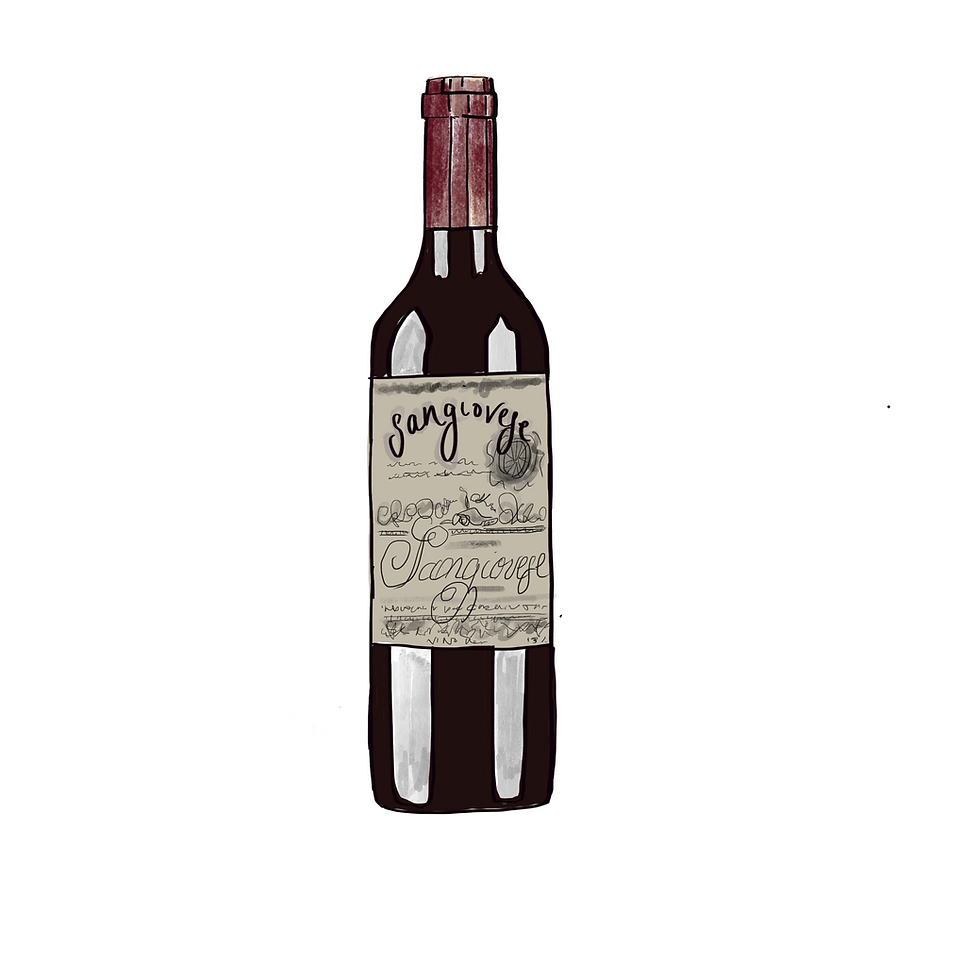Italians have a saying that goes, "a meal without wine is like a day without sunshine." And we couldn't agree more! This really highlights how important wine is for Italian culture and daily life.
For thousands of years, wine has been central to Italy's life and commerce, and it is one of the older wine-producing regions in the world.
Wine has also played a massive role in developing Italian cuisine, with dishes often being created to complement specific wines- Are we thinking Amarone della Valpolicella and Spaghetti a la carbonara? yum!

Chianti Region in Tuscany. Fun in Tuscany
Italian wine reflects the country's rich history and diverse regional cultures. Italy is home to over 350 'official' grape varieties, (more than 2000 unofficially) making it one of the most diverse wine-producing countries in the world. If you've had the chance to explore Italy, you know how diverse each region is, each with its unique climate, soil, and topography, which contributes to the distinct characteristics of the wines produced there.
In this blog post, we focus on Chianti!

Chianti Region in Tuscany. Winetourism.com
Located in the heart of Tuscany, Chianti is one of Italy's most famous wine regions. The region is well known for producing high-quality, full-bodied red wines mostly made from Sangiovese grapes. The local climate is warm and sunny, with cool nights and moderate rainfall, creating ideal grape-growing conditions.
Chianti's wine production history dates back to the 13th century, when the region produced high-quality wines so highly regarded that they were used as currency during the Renaissance period.

Italian Wine in the Renaissance. La Bella Donna
This gorgeous central region is home to many small, family-owned vineyards and wineries, each with its unique style and personality. Many of these wineries offer wine tastings and tours, allowing visitors to learn about the winemaking process and sample some of the region's finest wines. A wine tour of the Chianti region is a perfect way to experience the beauty of Tuscany while learning about the history and culture of Italian wine. (Check out Marchesi Antinori Winery)
The winemaking process in Chianti follows traditional methods that have been passed down through generations of winemakers. The Sangiovese grapes are carefully hand-picked and sorted, then fermented in temperature-controlled stainless steel tanks. The wine is then aged in oak barrels for several months, allowing the wine to develop its characteristic complex flavours and aromas.
From 1996 onwards, Chianti's appellation rules changed and they now require a minimum of 70% of Sangiovese grapes to be in Chainti's DOCG category. A blend with other grapes like Canaiolo Nero, Merlot and Syrah are allowed at lower percentages to add fruitiness, more tannin or balance to the final wine. ( WineMag)

Sangiovese Grapes. WineMag
Chianti wines are known for their deep ruby red colour, high acidity, and tannic structure. The wines have complex fruit flavours, with notes of cherry, plum, and blackberry and earthy undertones of leather, tobacco, and spice. The wine is typically medium-bodied, with a long, smooth finish.

Sangiovese Wine Illustration from our Book. Italian Wine Connoisseur
Chianti is also home to several sub-regions, each with its unique characteristics. The Chianti Classico region is the most well-known and produces some of the region's top wines. Other sub-regions include Chianti Rufina, Chianti Colli Senesi, and Chianti Colli Fiorentini, each with its distinct terroir and style.
In addition to being a popular wine region, Chianti is also a popular tourist destination known for its beautiful scenery, historic towns, and delicious cuisine. The region's hilltop towns, such as Greve, Panzano, and Radda, offer stunning views of the surrounding countryside and are home to some of the region's best restaurants and wine bars.
Chianti wines are the perfect accompaniment to many Italian dishes, particularly those that are rich and savoury. Classic Italian dishes like pasta with meat sauce, roasted meats, and aged cheeses perfectly match Chianti's bold and complex flavours.

Chianti DOCG stamp. WineMag
Once you've explored the vineyards and tasted some of the incredible wines, you might want to check out some of the other sights in the region.
The area is home to many charming medieval towns, such as San Gimignano and Monteriggioni, with their cobbled streets, ancient walls, and beautiful architecture. The town of Siena, known for its stunning Gothic cathedral and famous Palio horse race, is also nearby and definitely worth a visit.
And, of course, no trip to Chianti would be complete without sampling some of the delicious local cuisines. The region is famous for its hearty meat dishes, such as bistecca alla Fiorentina (Florentine-style steak) and wild boar stew. You'll also find plenty of fresh, homemade pasta dishes and delicious cheeses, such as pecorino.

Chianti landscape. Viator
Whether you're a wine lover like us, a foodie, or just looking for a beautiful place to relax and soak up the Tuscan sun, Chianti has it!
Salute!
Diana & Ellie
If you'd like to learn more about Italian wine, check out our book: The Italian Wine Connoisseur: a 7-Day guide to mastering Italian wines and grapes; with the confidence and expertise to drink boldly! Available in Amazon!

Comments